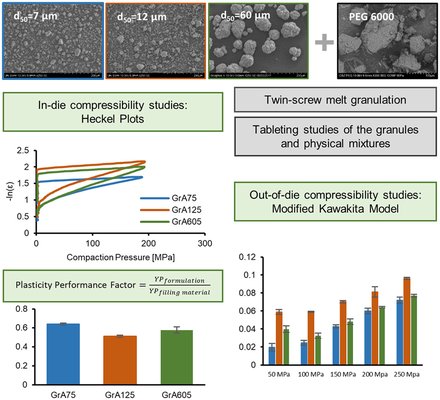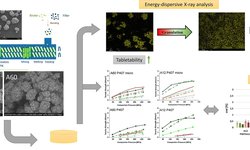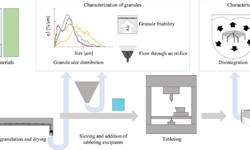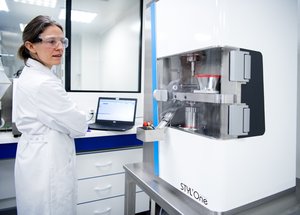Scientific papers
This investigation delves into the influence of the initial particle size on the tabletability and deformation behavior (specifically plasticity) of granules produced through twin-screw melt granulation (TSMG). As model substances, three distinct grades of anhydrous dicalcium phosphate (aDCP) were subjected to melt granulation with polyethylene glycol 6000 (PEG) using a twin-screw granulator. The compaction performance of the granules and the corresponding physical mixtures (PM) was assessed through in-die and out-of-die compaction analyses.
A significant impact on the granules' deformation behavior was observed in relation to the specific surface area of the filler material compared to the binder content. A relative yield pressure (YP) was introduced as a measure to describe the improvement in plastic deformation behavior, termed the plasticity performance factor (PPF). Additionally, a modified Kawakita model was employed to characterize granulation efficiency, contrasting it with a calculated physical mixture model. The studied granules exhibited heightened plastic deformation, improved tabletability, and reduced elastic recovery (ER). Image analysis of carbon energy dispersive X-ray maps indicated a fine distribution of the binder, filling the voids between the aDCP particles.
A smaller initial particle size of the filler material (DI-CAFOS® A7 and A12) proved more efficient than a larger particle size (DI-CAFOS® A60). Notably, a very low particle size (DI-CAFOS® A7) necessitated the addition of 1% (w/w) colloidal silicon dioxide to facilitate material feeding into the granulator. Furthermore, owing to the larger surface area of these particles, a higher binder quantity was required to achieve a low PPF and a high tensile strength (TS).

Comments
No comments posted yet.
Add a comment















